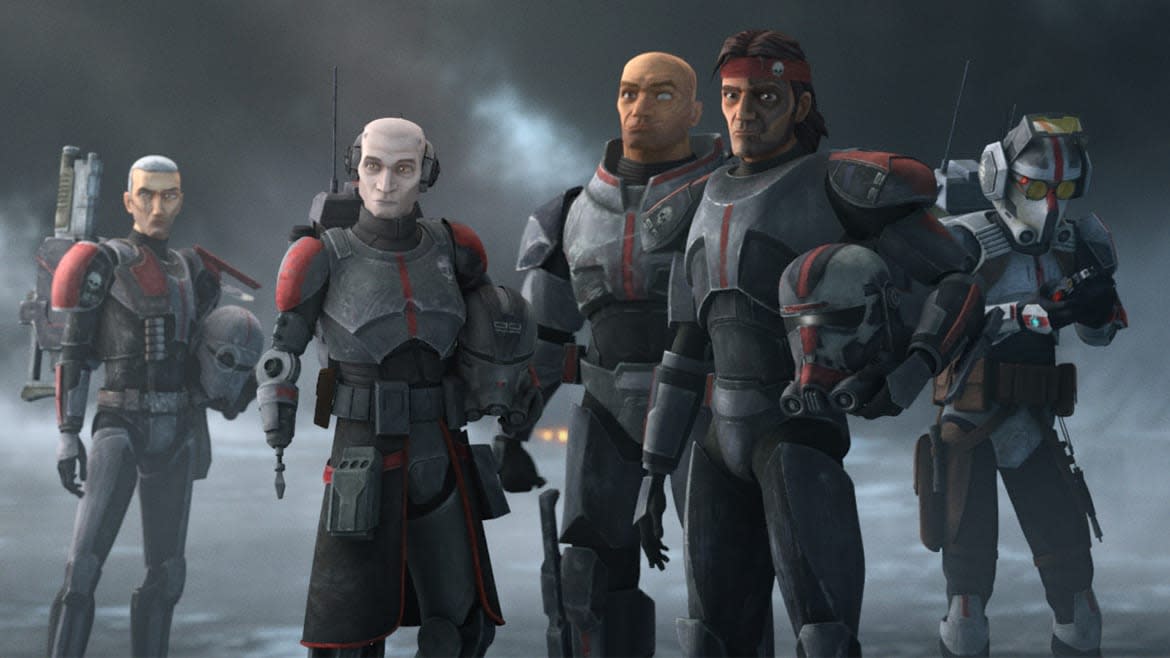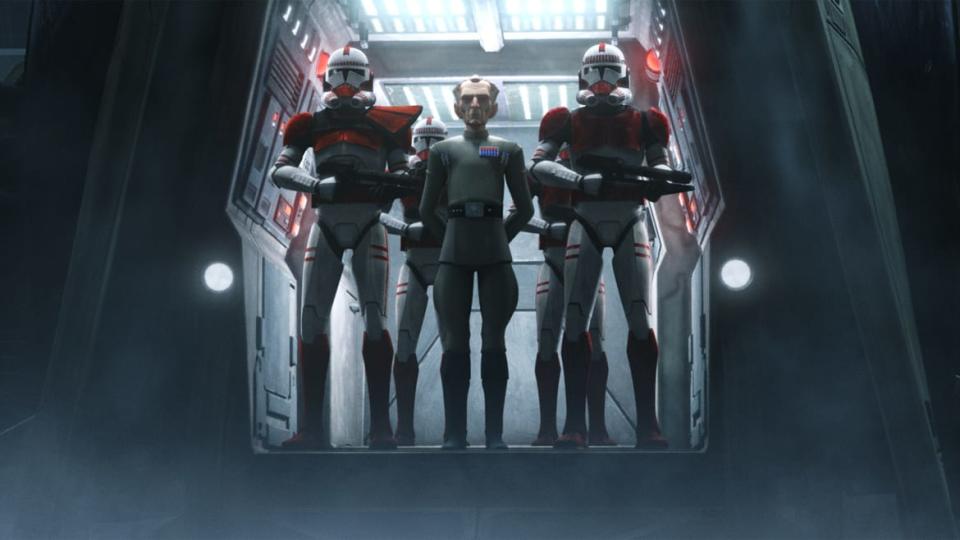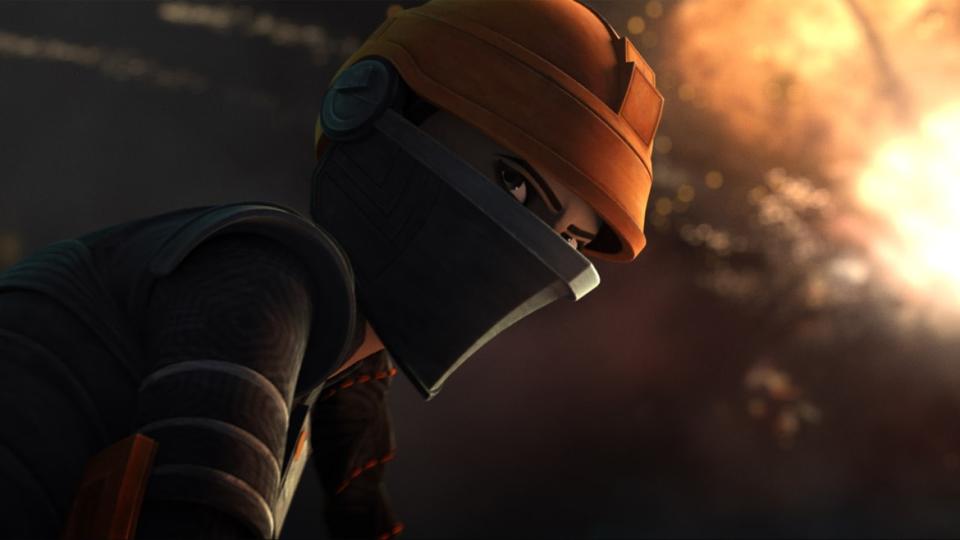Star Wars Cartoon ‘The Bad Batch’ Is Still a So-So Continuation of ‘Clone Wars’

- Oops!Something went wrong.Please try again later.
- Oops!Something went wrong.Please try again later.
- Oops!Something went wrong.Please try again later.
No fan of the early-2000s Star Wars prequels could resist the career arc of Dave Filoni. A veteran of Nickelodeon’s beloved Avatar: The Last Airbender, the animation director was plucked by George Lucas to work on the Clone Wars animated TV series that followed the conclusion of the prequel trilogy (but took place during it). Rather than holding his nose or nudging the show away from the divisive movies that inspired it, Filoni embraced the prequels and helped to further expand their world. Whether he actively rehabbed the Star Wars franchise or just kept the faith while the fanbase underwent its usual mutations, his devotion helped sustain the series during its decade between live-action movies. Now he has extra cred as a higher-up at Lucasfilm who has actually worked closely with Lucas. The Star Wars empire by nature moves in multiple directions at once, but Filoni is the unofficial keeper of the prequel era.
This also means that many of his pet projects are tied to both the figurative and franchise past. The animated series The Bad Batch, for example, is both a Clone Wars spinoff and a sidelong follow-up to Revenge of the Sith—a sequel to the midquel of the prequels, if you will. It follows a ragtag squad of modified clone soldiers, first introduced on Clone Wars, as they navigate the aftermath of the Galactic Empire’s takeover, wherein most clones obediently turned against their various Jedi commanders (and also, you know, democracy). In some ways, this story fills in corners and timelines of the Star Wars galaxy with the imagination and detail to which fans have become accustomed. In others, it feels like a protracted echo of Revenge of the Sith without that film’s doomy momentum—a series that’s mostly about pieces of the already-seen next phase falling into place.
The first half of the third and final season (premiering Feb. 21 on Disney+) skews more toward the latter, although really, signs of the end have been there since the beginning; the series never had much of a chance to revel in the group’s halcyon days of brotherhood and adventure. The Bad Batch itself (all voiced by Dee Bradley Baker) started diminishing almost immediately, with the marksman known as Crosshair ditching his “brothers” for the Empire as ordered in the first season, and the tech guru known as, uh, Tech dying to help the others out of a tight spot in the second. That leaves only leader Hunter, demolitions expert Wrecker, and slightly cybernetic Echo, who is more of a part-timer at this point. Even adding in scrappy teen girl clone Omega (Michelle Ang), they’re still one-third of a proper dirty dozen.
Perhaps sensing that their numbers are dwindling a little early, the new season brings Crosshair back into the fold after following his story separately for most of the series. He’s paired with Omega for the third episode, a season stand-out that manages to fold in ticking-clock suspense, fearsome monsters, girl-and-her-dog bonding, and an appearance from Emperor Palpatine into a tight 25 minutes. The two of them spend some quieter time together as the B-story in a later episode, another highlight in part because of an A-story that’s allowed to simply send Hunter and Wrecker on a bounty-hunting mission, trading their assistance of Fennec Shand (Ming-Na Wen, reprising her Mandalorian/Book of Boba Fett character) for crucial information.

Admiral Tarkin in Star Wars: The Bad Batch.
The episodes that don’t trade as heavily in zippy action or side missions do have a compelling ongoing story hook: The Bad Batch pays increasing attention to the Empire’s transition from a clone army to recruited and conscripted stormtroopers, while redirecting cloning technology to more secretive and nefarious purposes, for which Omega’s blood will be desperately needed. In a broad way, the show addresses how soldiers can be honed for war and then cast aside when their battles are over (or become new conflicts). More specific to Star Wars, Filoni, head writer Jennifer Corbett, and their crew are exploring the faces, conflicts, and, yes, politics behind the famous and overfamiliar stormtrooper iconography. So often, recent Star Wars projects have felt obsessed with characterization through cool helmets, so it feels pointed that Bad Batch focuses on what’s underneath those sleeker surfaces. Omega, the purest-hearted of the group, doesn’t fit into clone armor at all.
The SpongeBob Super Bowl Was More Fun Than the Real Game
But with less of a mix between the show’s ongoing master plot and semi-standalone adventures, certain capture-rescue-escape patterns emerge, and the show sometimes feels perfunctory. Despite manageable runtimes, fleet pacing, and better-than-ever animation (with her new haircut, Omega no longer resembles a little wooden fancy lad), a certain spark of inspiration remains missing.

Fennec Shand in Star Wars: The Bad Batch.
The inimitable daftness of Lucas is the easiest way to describe what the show lacks, but either the sincere cleverness of Rian Johnson (The Last Jedi) or the passionate rigor of Tony Gilroy (Andor) would more than suffice. Instead, characters speak their feelings with a kind of expositional glumness, even when they’re supposed to be expressing important emotions. “I thought one day I’d be flying one of these on a mission. A lot’s changed,” one clone intones flatly. “If you want to keep her safe, you need to find out why she’s so important to them,” another explains about Omega and the bad guys, essentially tasking the characters with locating even more exposition. Lucas may have struggled with human speech, but Anakin expounding upon his hatred of sand is memorable in its lunging awkwardness.
Even more than The Clone Wars, The Bad Batch often comes across as a more reasonable version of the prequels—a Star Wars project for anyone who’s ever uttered the phrase “good ideas, bad execution.” The show also forges further connections between the prequel era and the newest fandom target, the recent sequel trilogy; perhaps that’s another valiant Filoni rescue mission. In the meantime, there’s a little bit of overarching suspense in The Bad Batch over whether there’s space in the Star Wars chronology for Omega and her band of sorta-brothers to carve out some semblance of a happy ending, even with a decade-plus of Empire dominance looming—or if the show can pull off something more elegiac than it’s managed so far. An even greater treat would be to somehow fling them even further into the future, where their adventures might have some more breathing room. Right now, they’re fighting against their status as a respectable extended epilogue.
Get the Daily Beast's biggest scoops and scandals delivered right to your inbox. Sign up now.
Stay informed and gain unlimited access to the Daily Beast's unmatched reporting. Subscribe now.

